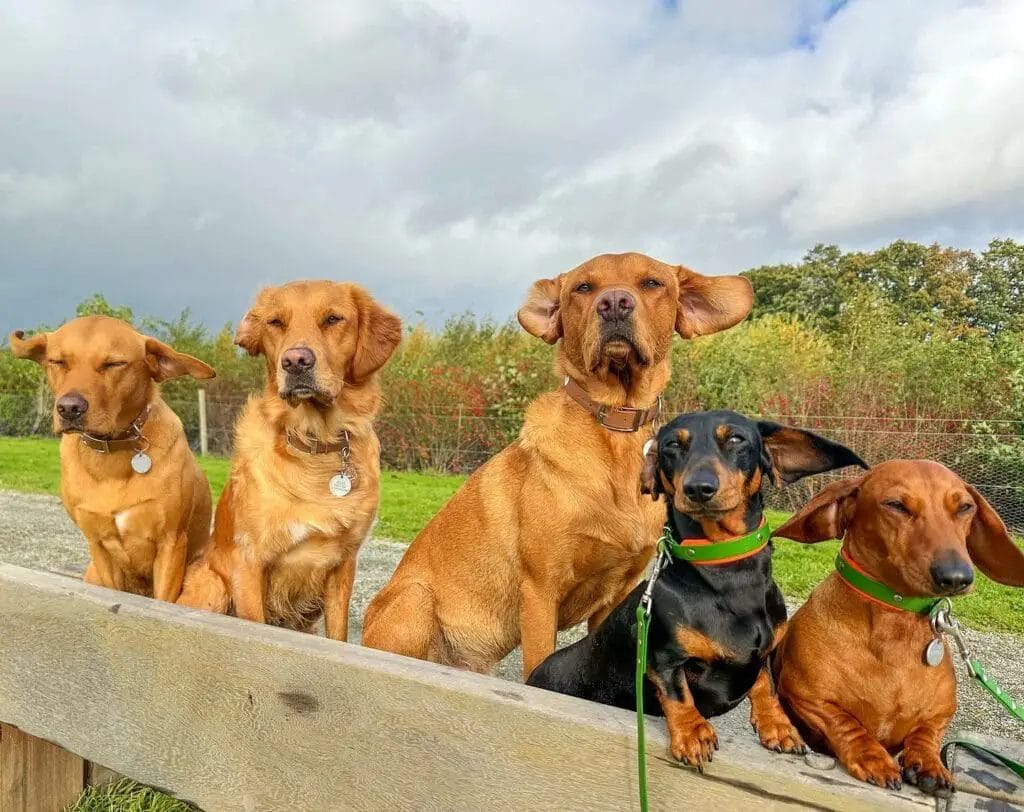
As a seasoned dog trainer and a beagle connoisseur, I’ve crossed paths with many a Dachshund – those endearing “wiener dogs” with a charm as long as their bodies. If you’re mulling over adding a Dachshund to your pack and are curious about how they mesh with other dogs, allow me to share my experience.
From my hands-on work with these feisty little hounds, I’ve learned that Dachshunds can be quite the social butterflies or the envious lone wolves. It all boils down to their individual temperament and the kind of introduction they get to their canine siblings.
Dachshunds’ Interactions with Other Dogs
Here’s the scoop: Dachshunds were bred for hunting. They’ve got an innate zest for the chase and an assertive streak that can sometimes tip into jealousy or aggression if not managed correctly. But, with the right mix of socialization and training, I’ve seen them become the life of the dog park, playing with pals ranging from spry Beagles to stately Labradors.
It’s paramount to remember that these introductions should be gradual and occur in neutral territory to sidestep any territorial tiffs. In my time, I’ve found that breeds like Cocker Spaniels, Golden Retrievers, and even Poodles often become fast friends with Dachshunds. Yet, it’s vital to judge each dog as an individual – no two are ever the same.

Introducing a New Dog to Your Dachshund
Welcoming a new dog into your home is a dance of patience and careful choreography. I always advise owners to keep initial walks parallel but separate, progressing to shared space once comfort sets in. Neutral ground, such as a local park, is ideal to avoid any territorial guarding from your Dachshund.
Pro Tip: Shower your Dachshund with attention during this period to allay any fears of being upstaged by the newcomer.
Dachshunds and Non-Canine Companions
Now, let’s talk about non-canine pets. A Dachshund’s prey drive can be high – they were bred to dig out badgers, after all. So while they can coexist with a family cat or even a rabbit, it requires a watchful eye and a firm, positive training approach to keep everyone safe.
When considering a Dachshund and other pets, it’s not just about training but also understanding the dynamics and natural instincts at play. Even then, there’s a harmony to be found. It’s a testament to their adaptability that Dachshunds can learn to coexist with an array of pets, even those they might view as prey.
Managing a Multi-Dog Household with a Dachshund
Introducing a second dog into your home with a Dachshund already in residence is quite the adventure. These dogs can thrive in a pack, provided they are given enough individual attention. Breeds that mirror their size and energy, such as Beagles and Corgis, often make suitable housemates.
When it comes to making intros, I always suggest a gradual approach. Start on neutral ground and observe their body language closely. It’s equally crucial to ensure each dog has their own space and belongings to minimize any competition.
The Unique Dachshund Temperament
Dachshunds are a delightful mix of tenacity, energy, and affection. Their playful and loving nature makes them fantastic companions. However, their strong will means that respect training is non-negotiable. A respectful Dachshund is a compliant one, and this respect is gained through consistent, positive reinforcement training.
The bond they form with other dogs, even those of different breeds, can be as strong as any – provided they are given the chance to socialize from an early age. And while they may not always recognize another Dachshund as a kin, it’s their vibrant spirits that can connect them with other canine friends.
Exercise, Health, and Harmony
Dachshunds, with their deep-seated hunting instincts, require ample exercise and mental engagement. Neglect this, and you might find them taking up landscaping your garden as a hobby – an endeavor most owners don’t particularly appreciate.
Training a Dachshund is about understanding their personality – stubborn yet intelligent, independent but loving. Consistency is key in training them to be model citizens in the canine community.
It’s also critical to note that their distinctive body shape necessitates careful handling to prevent back issues – something to bear in mind if you have larger, more boisterous dogs at home.
Choosing a Companion for Your Dachshund
When selecting a companion for your Dachshund, it’s about finding a balance – a dog that matches their energy yet respects their space. Terriers, Mini-Dobermans, and even the gentle giants like Boxers can fit this bill nicely.
But always remember, integration is a process. Keep the leashes on for initial meetings and watch closely for how both parties react. Rewards and patience go a long way in forging a peaceful cohabitation.
Dachshunds and Their Canine Relationships
In case you’re pondering some common queries:
- Are Dachshunds good with other dogs? Yes, if socialized and trained well, though their individual personality also plays a role.
- What dog goes well with a Dachshund? Look for dogs that complement their size and energy, like Pugs or Labradors, but always assess the unique temperament.
- How do you introduce a Dachshund to another dog? Neutral ground, leashed introductions, and a watchful eye are the keys.
- Do Dachshunds get along with other animals? They can, with proper training and supervision, but always be mindful of their hunting heritage.
In closing, whether it’s a Dachshund or another breed, remember that every dog deserves a chance at companionship, and with the right guidance, a harmonious pack is more than just possible – it’s a joy to behold.
